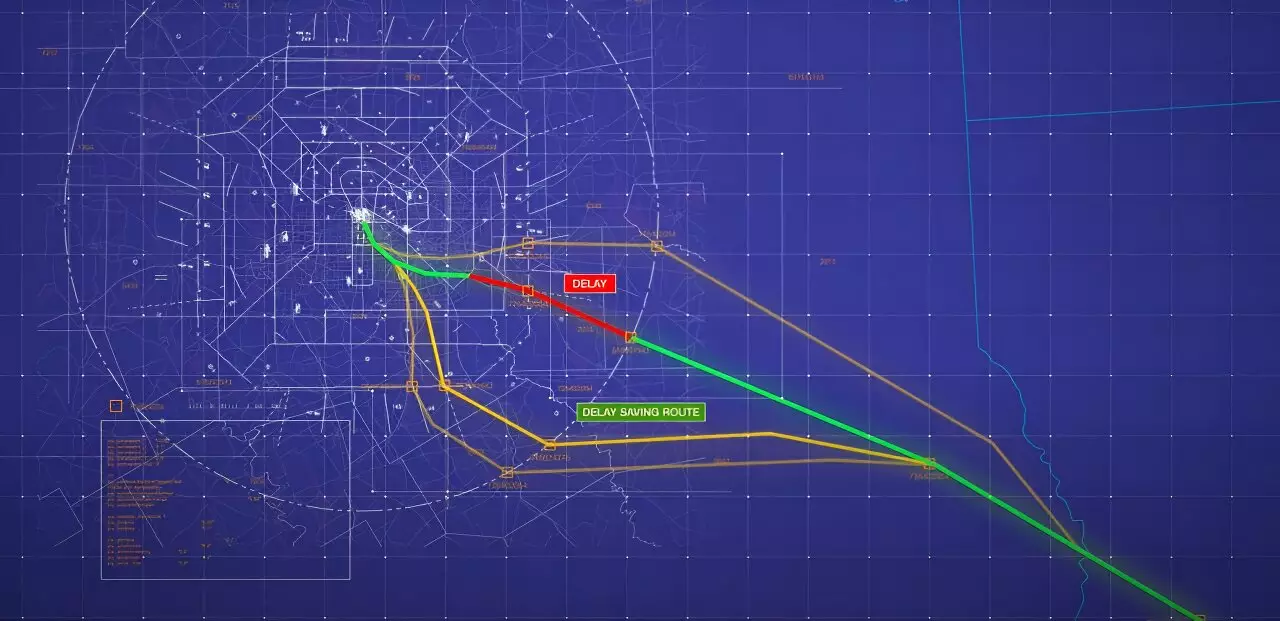The aviation industry is on the brink of a technological revolution, thanks to NASA’s Digital Information Platform (DIP). This innovative resource, developed by NASA’s Ames Research Center in California, is designed to provide real-time data to assist air traffic managers in making informed decisions to ensure efficient movement of airplanes through the skies. Drawing inspiration from smartphone navigation apps, the DIP utilizes a cloud-based, service-oriented architecture to gather and process information about weather conditions, potential delays, and more from various flight participants, such as airlines and drone operators.
While the main goal of the Digital Information Platform is to save time for travelers, it also offers a myriad of other benefits to the aviation industry. NASA has collaborated with airlines to demonstrate traffic management tools that have improved traffic flow at select airports, resulting in significant fuel savings and reduced carbon emissions. By integrating data gathered through partnerships with airlines onto the platform, NASA is paving the way for a more sustainable and efficient aviation system.
As we look ahead to the 2030s and beyond, the skies above the United States are expected to become increasingly congested. This rise in air traffic poses a challenge to the current National Airspace System, prompting the need for innovative solutions. NASA’s vision for future airspace involves leveraging new technologies, such as machine learning and artificial intelligence, to create a highly automated, safe, and scalable environment. The DIP plays a crucial role in this vision, providing detailed and curated information to pilots, air traffic managers, and other stakeholders in the aviation industry.
NASA’s aeronautical innovators have already begun implementing the Digital Information Platform at several airports in Texas, with plans for further demonstrations in the future. These digital services are currently in use in the Dallas/Fort Worth area, with expansion to the Houston airspace scheduled for 2025. The results from these tools have been promising, with a machine learning-based tool saving over 24,000 lbs of fuel in 2022 by streamlining air traffic in Dallas. The potential impact of these tools on efficiency, safety, and sustainability is significant and could revolutionize the way we approach air travel.
The success of the Digital Information Platform is largely due to the partnerships forged with airlines and other stakeholders in the aviation industry. NASA’s continued collaboration with these partners has led to the creation and expansion of a partnership ecosystem that benefits everyone involved. By working together to implement advanced digital tools and services, NASA and its partners are shaping the future of aviation and paving the way for a more efficient, safe, and sustainable air travel system.
NASA’s Digital Information Platform represents a major step forward in the evolution of the aviation industry. By harnessing the power of data and technology, NASA is revolutionizing the way air traffic is managed and paving the way for a more efficient and sustainable future. The impact of the DIP is already being felt, with tangible benefits in fuel savings, traffic management, and overall efficiency. As we look towards the future of aviation, it is clear that the Digital Information Platform will play a key role in shaping the way we travel through the skies.


Leave a Reply